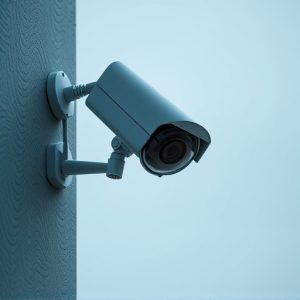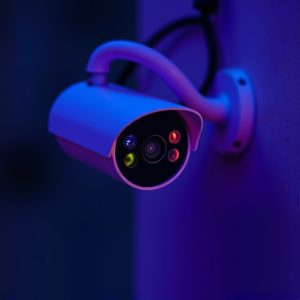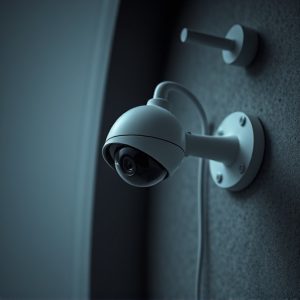Mastering Hidden Security Cameras: Applications, Installation Tips, and Legal Compliance
Hidden security cameras play a critical role in modern safety and security, offering unobtrusive sur…….
Hidden security cameras play a critical role in modern safety and security, offering unobtrusive surveillance that's ideal for sensitive areas. These cameras act as a deterrent to criminal activities by enabling continuous monitoring of assets and valuables. In the event of an incident, they capture essential evidence, assisting law enforcement in identifying perpetrators quickly. Hidden cameras are versatile and effective in both residential and commercial settings, used by homeowners for theft prevention and to check on family members, and by businesses for employee monitoring, reducing shoplifting, and enhancing customer safety. When integrated with smart systems, these cameras provide proactive monitoring and real-time notifications. The article also discusses the importance of selecting and positioning hidden cameras carefully to ensure comprehensive coverage without revealing their presence, which can deter potential intruders. Legal compliance is essential in their use, including following privacy laws, obtaining consents for recording, secure handling of footage, and posting appropriate surveillance signage where required. By combining robust security with respect for privacy and legal boundaries, hidden security cameras offer a discreet yet effective way to protect spaces without violating civil liberties.
Hidden security cameras have become a cornerstone in modern surveillance strategies, offering discreet protection without compromising on effectiveness. This article delves into the multifaceted world of hidden cameras, exploring their applications and benefits, installation nuances, and the critical legal considerations that govern their use. We’ll guide you through various types of hidden security cameras, highlighting their distinct functions and the cutting-edge role of AI in enhancing surveillance capabilities. Privacy and data protection are paramount; we’ll discuss how to secure your investment while ensuring compliance with relevant laws. With insights on best practices for placement and monitoring, understanding high-quality resolution needs, and anticipating future trends in technology innovation, this comprehensive guide equips you with the knowledge to select the ideal hidden security camera for your specific requirements.
Understanding Hidden Security Cameras: Applications and Benefits
Hidden security cameras serve a pivotal role in enhancing safety and security measures across various domains. Their covert nature allows for continuous surveillance without overtly altering the environment, which can be particularly beneficial in sensitive areas where maintaining an inconspicuous presence is key. These devices are adept at deterring criminal activity, offering property owners a discreet method to monitor their premises and protect valuables. Additionally, hidden security cameras can provide critical evidence should an incident occur, enabling authorities to identify perpetrators with greater efficiency.
In both residential and commercial settings, hidden security cameras offer versatile applications. They are often employed in homes to safeguard against burglaries or to keep an eye on vulnerable family members. In businesses, these cameras can monitor employee productivity, prevent shoplifting, or ensure the safety of patrons. The benefits of hidden security cameras extend beyond deterring theft and vandalism; they also facilitate remote monitoring through integration with smart home systems or business security networks, allowing for real-time alerts and video feeds. This technology empowers users to maintain vigilance without compromising the aesthetics or functionality of their spaces.
The Intricacies of Installing and Legal Considerations for Hidden Security Cameras
Hidden security cameras serve a critical role in enhancing surveillance and ensuring the safety of private and public spaces alike. Installing these discreet devices requires meticulous planning and adherence to technical specifications. The process begins with selecting the appropriate camera model that aligns with the intended coverage area, lighting conditions, and desired resolution for clear footage. Positioning is equally crucial; cameras must be installed at heights and angles that offer optimal viewing without being immediately noticeable to potential intruders. Additionally, these cameras should be strategically placed to capture both entry points and areas of high value or activity.
From a legal standpoint, the use of hidden security cameras is subject to stringent regulations. It is imperative to comply with local and state laws regarding privacy and surveillance. In many jurisdictions, consent must be obtained for recording in private spaces, whether they are indoors or outdoors. Recording in areas where individuals have a reasonable expectation of privacy, such as restrooms or locker rooms, is typically prohibited. Furthermore, the storage and transmission of footage must be handled securely to protect against unauthorized access and breaches. Users should also ensure that signage is appropriately placed to notify individuals that they may be under surveillance, as required by law. Understanding these legal nuances is essential for responsible use of hidden security cameras, ensuring that while safety measures are in place, civil liberties are upheld.


